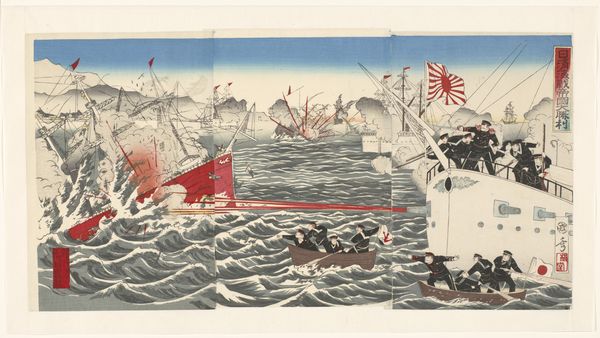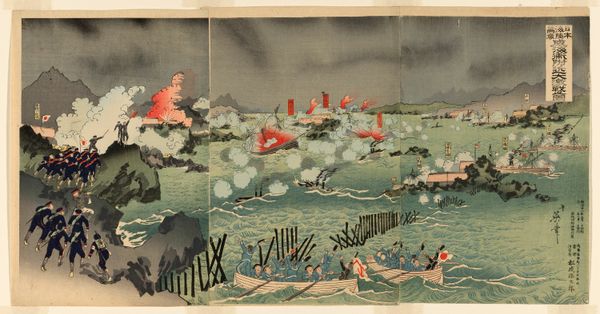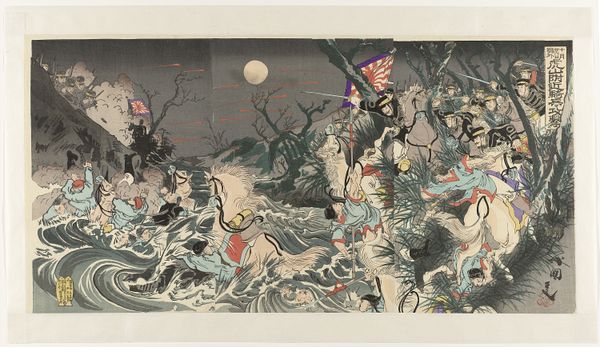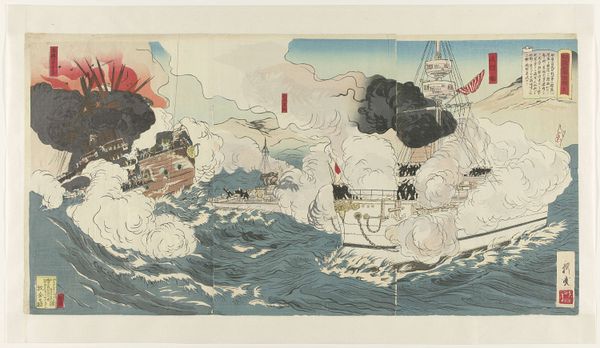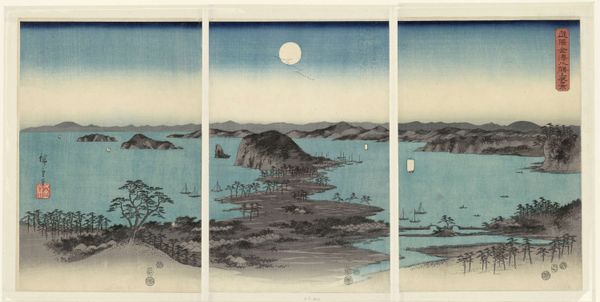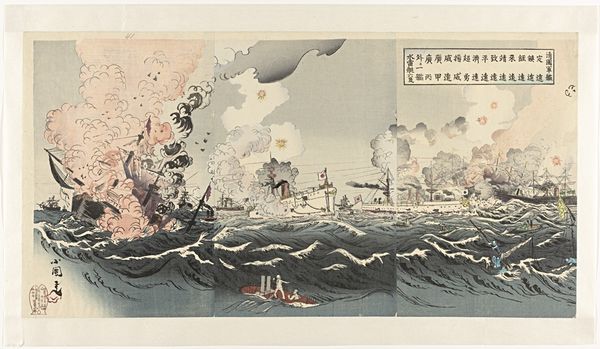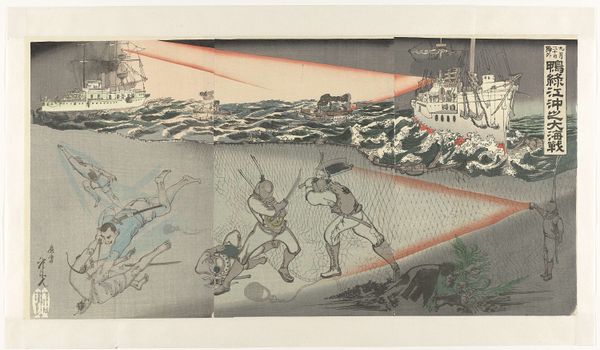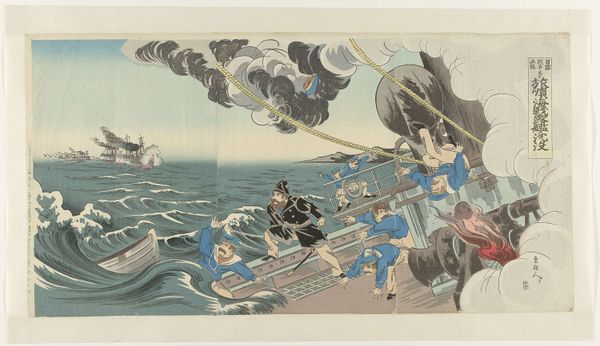
Dimensions: height 370 mm, width 720 mm
Copyright: Rijks Museum: Open Domain
Editor: This woodblock print from 1894, titled *Uitzicht op de zeeslag nabij Dagushan*, depicts a naval battle, and its crowded composition and stormy atmosphere definitely evoke a sense of chaos and drama. What symbolic significance can you draw from a work like this? Curator: The print certainly presents a striking image of conflict. Consider the Ukiyo-e tradition within which this work exists. Did these artists consciously utilize symbolism to convey power dynamics, or were they primarily documenting current events? The recurring motif of the rising sun flag is certainly powerful here, signaling Japan’s emerging dominance. Notice how those flags, boldly rendered, punctuate the chaotic scene. They serve as a visual reminder of national identity and military strength amidst the tumult. Editor: That's a great point about the flags! The rising sun symbol really does command attention. It almost feels like a calculated move to instill a sense of national pride or perhaps even propaganda. How might viewers at the time have interpreted this piece? Curator: Undoubtedly, for contemporary viewers, such imagery resonated deeply, reaffirming cultural narratives of heroism and progress. The turbulent waves may also reflect the internal anxieties about Japan’s shifting role on the world stage. Even the specific rendering of the sky and light adds to the emotional weight of the scene. Have you considered how the elements themselves contribute to the visual story being told? Editor: The light almost feels ominous, lending weight to that national pride and anxiety. The print serves not only as a historical document but also as a potent expression of national identity in a time of immense change. Curator: Precisely. Works like this offer invaluable insight into the intersection of cultural memory and symbolic representation, shaping and reflecting the psychological landscape of an era. It has layers beyond merely reporting an event. Editor: It's amazing to see how much deeper you can go when interpreting symbolic intent. Thanks so much.
Comments
No comments
Be the first to comment and join the conversation on the ultimate creative platform.
